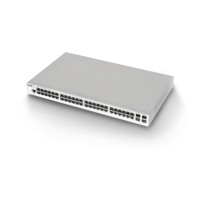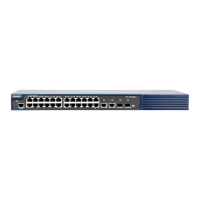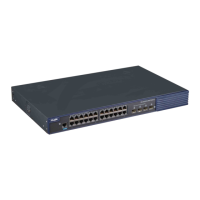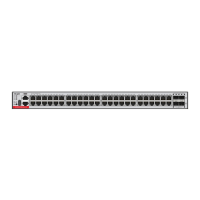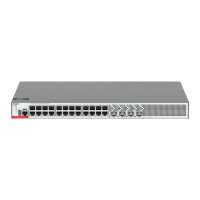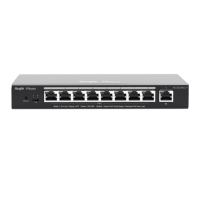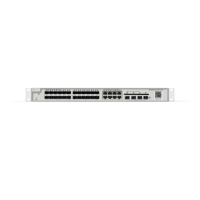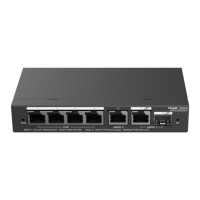Configures the stability interval in seconds for the NSSA ABR that
functions as a translator to change to a non-translator. The range is
from 0 to 2147483647. The default value is 40.
The default-information-originate parameter is used to generate the default Type-7 LSA. However, on
the NSSA ABR, the default Type-7 LSA will always be generated; On the ASBR (which is not an ABR
at the same time), the default Type-7 LSA is generated only when the default route exists in the
routing table.
The no-redistribution parameter prevents the OSPF from advertising the external routes imported
with the redistribute command to the NSSA on the ASBR. This option is generally used when the
NSSA device is both an ASBR and an ABR.
To reduce the number of LSAs sent to the NSSA, you can configure the no-summary parameter on
the ABR to prevent it from advertising summary LSAs (Type-3 LSAs) to the NSSA. In addition, you
can use the area default-cost command on the NSSA ABR to configure the cost of the default route
advertised to the NSSA. By default, this cost is 1.
If an NSSA has multiple ABRs, the ABR with the greatest ID is selected as the Type-7 or Type-5
translator. To configure that an NSSA ABR always functions as a translator, you can use the
translator always parameter. If the translator role of an ABR is taken away by another ABR, the ABR
still possesses the conversion capability within stability-interval. If the ABR fails to take back its
translator role when stability-interval expires, the LSA that changes from Type-7 to Type-5 will be

